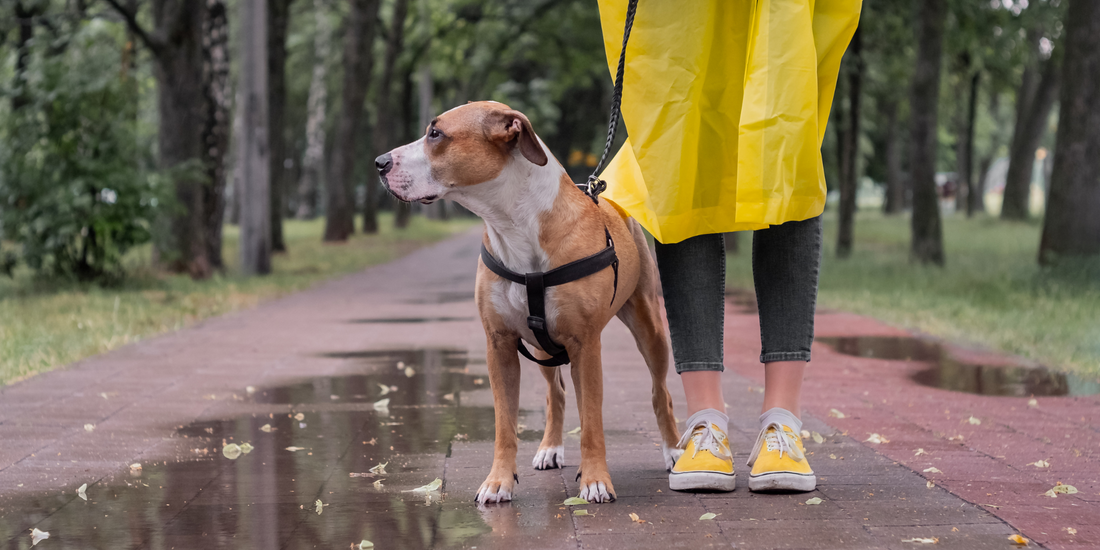Hurricane season is, unfortunately, upon us once again. Our dogs are our family and we want to keep them safe, just like we want to keep our human family safe. So how do we keep our furbabies - be they of the canine, feline or other pet species - safe during hurricane season? Here are some tips to help.
1. Stock up on food and water
When a storm is brewing, people stock up on non-perishable food and fresh water for themselves. But it's important do this for your dog too. Order extra dog food for your pup and make sure to get enough fresh water for him or her as well.
Pro Tip: If your dog’s food requires refrigeration or freezing, get a cooler and some ice. This will help you prepare for a power outage.
2. Stock up on their meds
You'll also want to make sure to stock up on your dog's medications. You don't want to risk running out of medicine and being unable to get more. When it comes to your dog’s health, it's just that important.
Pro Tip: Get enough medicine to outlast the storm plus any aftermath. You never know what you’ll be in for - potential flooding and infrastructure destruction could mean limited access to your vet and his or her office, delayed mail or package delivery or extra time out of your home in cases of evacuation.
3. Make sure all tags and microchips are up-to-date
In situations like this, it’s best to prepare for the worst. This is why it’s a good idea to double check that all your dog’s identification tags and microchips are up-to-date. If your dog somehow gets separated from you, his or her tags and microchip will help reunite you two. You’ll breathe easier during the storm knowing your pup's identification is updated.
Pro Tip: Include your dog’s name, your phone number, and any urgent medical needs on dog tags.
4. Figure out where they’ll go to the bathroom
Your dog will need to go to the bathroom several times a day (naturally), but it may not be safe to go outside due to heavy rain, strong winds, lightning and thunder. If you can take your dog outside, make sure he or she is on a leash. But if not, you can use puppy pads as an indoor bathroom solution.
Pro Tip: Another option is to fill a kiddie pool with sod, mulch or sand and take your dog there. Putting it in the garage is a great spot but if you don’t have one, find somewhere safe that works best for you.
5. Put together a first aid kit
It’s always a good idea to assemble a first aid kit for yourself during natural disasters, so why not make one for your pets? A first aid kit for dogs doesn’t look much different than one for a human. Look to include things like gauze pads, pet-safe tape, towels, pet-safe anti-bacterial ointment, etc.
Pro Tip: Put your pups' vet records into the first aid kit.
6. Consider a crate
Dogs are den animals and lots of canines actually find comfort in crates. They see them as a safe place during stressful or scary times. Just make sure the crate is big enough for your dog to stand up, turn around and lie down comfortably.
Pro Tip: Put your dog’s favorite bed in the crate along with some of their toys. If you don’t have a dog bed, you could put some blankets in there or buy one in preparation for a natural disaster.
7. Use some natural calming aids
If a crate isn’t enough to calm down your dog, there are some supplementary options. Things like a thunder jacket, calming music, essential oils, hemp chews, Dog Appeasing Pheromone (DAP) plug-ins or any other anti-anxiety relief can work for your pup.
Pro tip: You can designate one room in your house as a “safe room” where you and your dog stay during the most intense times of the storm or disaster.
8. Pack a bag in case of evacuation
With hurricanes, there’s always a chance you’ll get an evacuation order. First off, never leave your dogs behind. In case of evacuation, have a bag packed and ready and include your dog’s essentials in the bag.
Pro Tip: Call local evacuation centers to see which accepts pets. If you don’t have any luck there, call around to hotels, animal shelters, and even your veterinarian to arrange a safe haven. Still no luck? Reach out to friends and family who live far enough from the storm.
Here is a short checklist to look at before you leave the house together:
- Check that your dog’s collar and ID tag are on securely.
- Take vet records.
- Bring a crate and, if your dog is small, travel carrier.
*Make sure to mark them with your name, your pet’s name, and your contact information.
- Pack their food, medications, food bowl, water bowl and enough water.
*Make sure to mark them with your name, your pet’s name, and your contact information.
- Take extra collars, harnesses and leashes.
- Take some blankets, toys, and (if it fits) their dog bed.
Pro Tip: Keep a recent photo of your pets on you in the event that you get separated. Also have a photo of you with your dogs in case their collars and tags fall off or if your dog isn’t microchipped. In the worst case scenario that you’re separated, these photos can help identify you as your dog’s mom or dad.

